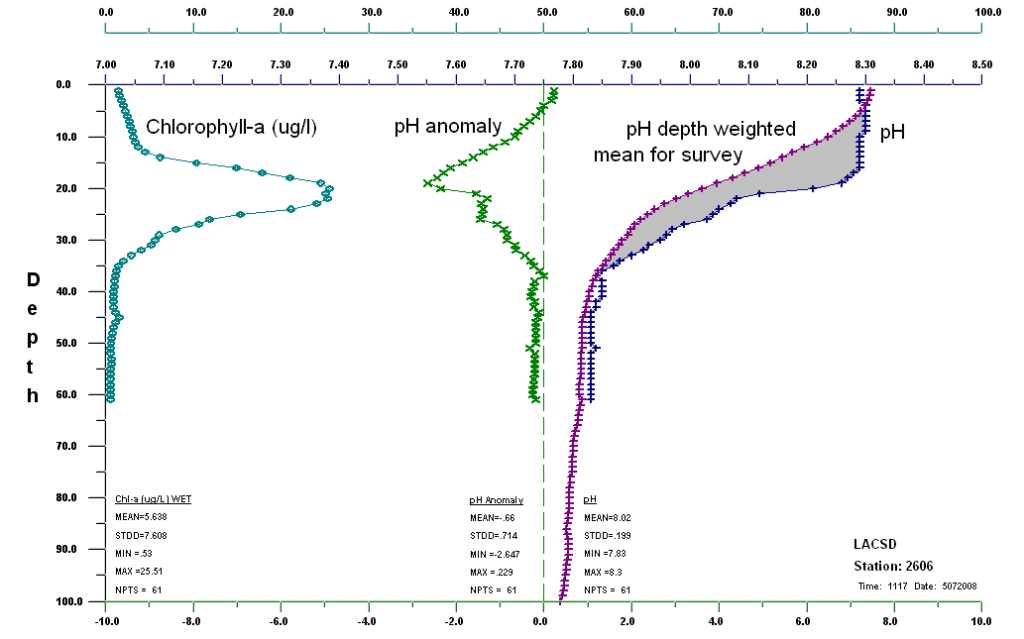PI: Alex Steele, P.E., M.ASCE
Institution: Los Angeles County Sanitation Districts
Phone: (562) 699-7411 x2812
Email: asteele@lacsd.org
A consortium of Southern California POTWs coordinate coastal ocean monitoring efforts required by their individual NPDES permits for ocean discharge of treated wastewater. Coordinated monitoring is done quarterly on the 1st week of February, May, August and November at over 300 sites using multiple vessels and Sea-Bird CTDs equipped with pH, chlorophyll-a and CDOM fluorescence, light transmissometer and DO sensors.

The POTWs are required to meet all conditions in the California Ocean Plan (COP) immediately outside an initial dilution zone around their outfalls. For pH, the COP specifies “The pH shall not be changed at any time more than 0.2 units from that which occurs naturally”. Permits require continuous pH monitoring of effluent. Recent JWPCP effluent had an average pH of 7.15, alkalinity of 330-430 mg/l, and a predicted CO2 for typical effluent properties of 20 mg/l. Dilution tank tests in seawater observed pH change from 8.17 down to 8.15 as effluent was added to lower dilution from 2000:1 to 100:1. The resolution of the Sea-Bird, Inc pH sensor is 0.1 pH unit under optimal conditions.


The POTWs use a sequence of pH buffer solutions and a linear best-fit algorithm to calibrate the sensor voltage to pH prior to each survey. Despite this, pH from simultaneous sampling is frequently found to be inconsistent between agencies/sensors.
Limited efforts have been made to look for trends in two decades of offshore pH measurements. Results have varied between agencies.
 The pH data show significant stratification through most of the year, pH is reduced at depth, and elevated where high concentrations of phytoplankton are detected. Between 2008-09 Los Angeles County Sanitation Districts surveys measured pH in the upper 100m ranging from 7.46 to 8.45.
The pH data show significant stratification through most of the year, pH is reduced at depth, and elevated where high concentrations of phytoplankton are detected. Between 2008-09 Los Angeles County Sanitation Districts surveys measured pH in the upper 100m ranging from 7.46 to 8.45.
Recently simultaneous casts using CTDs of two agencies have been completed offshore when research vessels meet at an agreed site. Unfortunately pH is still not consistent.
This summary of the CBCWQS coastal ocean monitoring program and discussion of pH sampling and results was prepared for the California Current Acidification Network Workshop, July 2011, SCCWRP